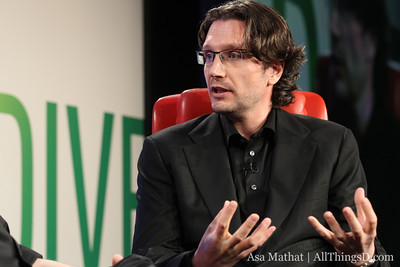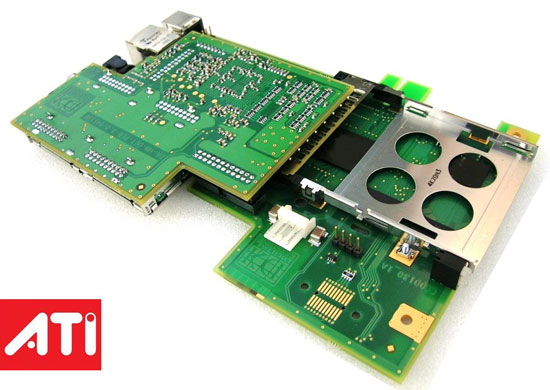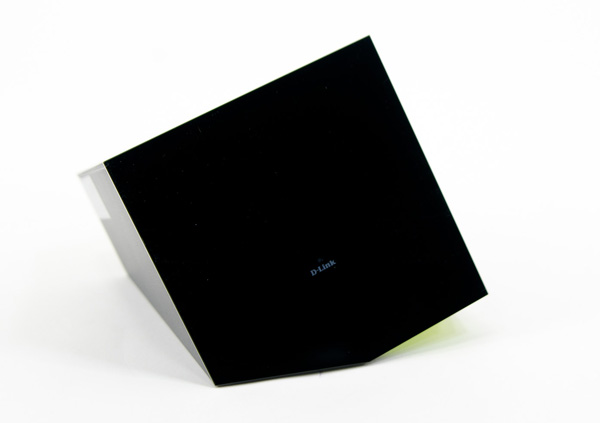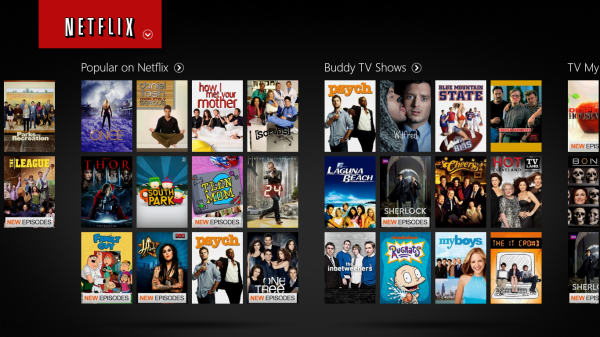Earlier this week Intel announced what we'd heard rumors of in months past, that it would be creating an IPTV service along with a custom software and hardware platform to deliver it direct to consumers. A few hours after the announcement, I had the opportunity to speak with Erik Huggers, formerly of the BBC and currently heading up Intel's new Media division.

For years Intel has tried to grab a slice of the TV business. Remember the Intel CE series of Atom based SoCs? How about Sandy Bridge's Intel Insider technology? Both of these were focused attempts to solve problems within the TV industry, but both ultimately went no where. Intel's solutions thus far have been too narrow in scope to do anything.
The TV today reminds me a lot of smartphones in the early 2000s. There's tons of potential, but largely ruined by slow hardware, kludgy user interfaces and heavy fragmentation both on the content side and on the cross platform compatibility side. Much like the smartphone, the solution to revolutionizing the TV as a platform is unlikely to come from within the existing market. And just like the smartphone revolution, a disruptive solution here may very well come from a computing company.
What Is It?
At a high level Intel's unnamed TV play seems to work like this. Intel negotiates deals with content providers, said content lives on a server farm somewhere (likely running tons of Xeons courtesy of mother Intel). Using a box that Intel will sell you, you'll get access to this content over the Internet. The box will run an OS and software layer both developed by Intel. The content will include live TV, traditionally only available via a cable TV subscription. The box Intel will sell you won't act as a traditional PVR/DVR, instead you'll be able to activate a catch-up feature to pull down older episodes after they air, as well as live TV. How far back you'll be able to catch up will depend on the content license, it's technically feasible to go back as far as you'd like - but not all content owners will allow it. Intel's service will also include video on demand features to fill this gap. The goal is to provide one platform where you can get access to everything: live TV, episodes/content that have already aired, and even older content through VoD.
The content will be bundled together in some form. This isn't a purely á la carte TV service, but rather bundles put together by Intel Media rather than your cable company. Think cable channel/network bundling, but perhaps more granular than you're used to. Simply offering the same bundles at the same price as your cable company won't work, so I suspect the bundles will have to be more user friendly (more sensible, smaller, etc…).

ATI's OCUR CableCard Tuner for PCs, another failed solution to the problem from 7 years ago
Intel doesn't seem to have any intentions of keeping the content exclusive to this one box either. Erik wants to see this content on Ultrabooks, smartphones and tablets as well as on your TV. It sounds a lot like the holy grail of digital convergence: any content, on any device, anywhere. Netflix was really one of the first to achieve this level of ubiquity, but only really for older content. Intel seems to want to do this with live TV.
Intel isn't talking about bitrates or codecs yet, nor is it disclosing what content providers have already signed up for the service. The platform will launch this year and it'll be immediately apparent whether or not Intel is on the right track after that happens.
Pricing is also unknown at this point. Erik was careful not to brand Intel's TV service as a value play, implying that you may not actually save any money vs. your current cable provider. It's pretty obvious from the start though that Intel can't just offer a better experience than your cable TV provider, it also has to offer a cost competitive platform as well.
The Backstory: Why Get into the TV Business?
Erik presented his plans and got funding from mother Intel on December 8, 2011. In less than 12 months the Intel Media team had built all of the pieces of the puzzle. They'd built the streaming device, the OS, the web services infrastructure, the video infrastructure, everything. Erik told me that he'd never seen an organization move that fast in his career. To the objective outsider, this either means that Intel is putting a ton of support (think: cash) behind this project, or it's going to be half baked. Based on some of my own snooping, I don't think it's the latter. Which then begs the question, why was Intel so eager to go off and build an IPTV service and do all of this work? And why did it have to happen so quickly?
I didn't ask Erik the first question, although I think the answer is obvious. Intel's present success is very closely tied to the PC industry. It's trying to break into the established ARM smartphone and tablet industries to help go where the industry goes, but it does so as a late comer and is currently enjoying all of the struggles associated with that. The TV industry however hasn't really been revolutionized, and it's ripe for change.

The Boxee Box, one of many Intel powered solutions for the TV
We've seen high profile attempts to empower the big screen with devices like the Apple TV or Google TV. Smaller players have made similar attempts (e.g. Boxee Box, Roku). All of these boxes attempt to stream existing cloud based content to your TV, but they don't fundamentally replace a cable TV subscription. For some users, the content you can currently get on any one of these platforms is good enough to augment a cable TV subscription, while for others it's good enough to cut the cord entirely. For cord cutters, the gaps in content that remain are filled by content owner websites (e.g. southparkstudios.com) or through piracy. None of the existing platforms offer a universal solution for live TV either, you sort of have to hope that whoever is broadcasting whatever you want to watch in real time is kind enough to stream it - or you have to wait and watch it later.
The TV market today looks a lot like the smartphone market did not too long ago. There are established players, but no one is really doing it perfectly. There are good ideas, but no platform that unifies them all. Intel is interested in the TV market because it is a consumer facing business that's detached from the PC industry, and one that's ready for a revolution. Getting in early and generating revenue that's detached from PCs would help Intel grow its revenue base, diversify a bit and likely keep investors quite happy. The side benefits are obvious. Any solution here would need a fairly heavy cloud platform to drive it (you have to store, transcode and stream all of that content), plus if you really do pull off a good internet based TV strategy it simply drives usage of all other computing devices as you'd want to be able to stream/consume content on as many different screens as possible.
The "why do it?" question is an easy one to answer, but figuring out whether or not Intel can do it is a different one entirely. Intel certainly has the cash to pull off a dramatic play in the TV space. It also has the ability to customize silicon to put fears to rest of its TV solution being a giant pirate box. However, Intel hasn't traditionally done well in the consumer facing software/services department.
Intel does a great job of building fast silicon, validating it and optimizing software for it, but when was the last time you saw Intel build a gorgeous UI? Even Intel's reference Ultrabooks don't really ooze confidence that the company knows how to build a real consumer device, software, service or experience. The skepticism here is understandable and warranted.
The only solace Intel can offer to the skeptics is the fact that Intel Media is staffed by a combination of Intel insiders as well as from others outside of the company. Erik naturally stressed hiring from Google, Apple and Netflix. Erik himself came from the BBC and admittedly isn't much of a chip-head to begin with. The proof will be in the pudding. Intel hasn't publicly demonstrated anything, it hasn't announced pricing or a channel lineup. With a product launch sometime in 2013, we won't have to wait long to see how this plays out.
What I'd Like to See
I've done my best to cut through to exactly what Intel has said up to this point. There's a lot and very little at the same time. One thing I can take for granted however is that Intel won't be able to hit a moving target. I figured I'd end this piece with my own thoughts on what I'd like to see, as well as get your feedback as to what you'd like to see as well.
I cut the cord a while ago. What drove me to getting rid of my cable TV subscription was the fact that I simply never used it. Live TV was nice to have, but I never had the time to watch anything when it aired. Years ago I was on the opposite side of the spectrum. I had multiple DVR boxes and was all-in on cable TV. Before then I even tried adding premium channels like HBO and Showtime to my lineup. I'd always heard folks talk about how much better the programming was on those channels. And without those premium channels I was always behind the times on shows like the Sopranos or Weeds. What ultimately happened however was I didn't have time to watch all of the content I was paying for. When I had time to watch something, it was almost never live - I relied heavily on my DVR, which never let me watch my recorded content on whatever device I wanted to use. Even the content on those premium channels was surprisingly disappointing. I was paying a lot for what ended up being just one or two shows that I wanted to watch, and a lot of other content that I really didn't care about.

I was a late adopter of Netflix, but that content library gave me enough to watch during my limited downtime. I'd rely on the web for everything else. I could grab local channels over the air, but I rarely exercised that ability. For the most part, I'm fine living with this combination of Netflix and the web. I'd like everything in one place and I'd like newer content, but I'm not willing to pay an extra $50 - $100 per month to get that. Netflix is a downright steal as far as I'm concerned. At $8 per month I feel like I'm paying far less than what I should be.
At the same time, I understand where Netflix falls short. I can't subsist on older content alone. Every now and then I might want to watch something that was actually filmed this year. For that, Netflix needs a counterpart. Some turn to Hulu, and if you're a Hulu Plus subscriber you do at least get portability across multiple devices similar to Netflix. Unfortunately the content I want isn't always available on Hulu, and I'm not a fan of the delayed availability aspect either (waiting until the day after a show airs seems silly). Hulu has the pricing right, but the content and experience side could both use some work.
The ideal solution for me would be a service that contains the set of everything I care about that's not included in Netflix, extensible across all of my devices/PCs/Macs, for a monthly price substantially south of $50/month. The trick in all of this is the first stipulation: a service that contains the set of "everything I care about". Although I like basketball, I don't follow it religiously. I need the major networks, Comedy Central, perhaps the Food Network and one or two more. I need a smaller, targeted bundle. I don't mind the ability to scale up, but if Intel is really going after the cord cutters it needs to offer small steps.
I haven't talked about the quality aspect of all of this yet but I do believe there's a play there. TVs have gotten a lot bigger and cheaper, and quality HD projectors aren't absurdly expensive either. Getting truly high-bitrate, high-quality content that's streamable just hasn't been possible. I'd love the ability to stream > 10Mbps H.264, high quality content whenever I wanted to. I don't need it for all devices, but to be able to optionally kick into a high quality mode would start to enable some interesting high end usage models (and potentially higher revenue for Intel). Ultimately I'd love to see a situation where we can stream BD quality content when a movie launches in theaters, but that's a discussion for another time.
I realize I'm just one datapoint in all of this. I'd be very curious to see what you all have to say. In the comments below, share your thoughts on bundles, network/channel lineup, features you'd like to see and pricing. I can't guarantee anything, but this will at least give me good data to take back to Intel when I meet with them next.












